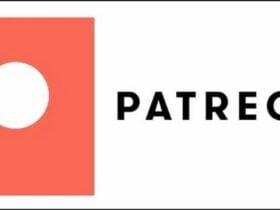To understand the changing trend in edtech, Gradeup, India’s largest online preparation platform for competition exams, recently researched to identify what students prefer in their online learning experience, specifically focusing on live classes. The findings are discussed later in the column.
The prevailing situation
The increase in mobile phone penetration at around 85 percent in rural India has facilitated and encouraged this edtech revolution. Due to a lack of availability in offline coaching, the growing demand for online sources is prevalent in smaller cities. As a result, there has been a wave in the edtech space, with many new entrants in the past five years. Existing ones have expanded to smaller cities with an agenda of addressing primary concerns like accessibility, cost efficiency, and improved quality of education.
Accessibility of good content and effective preparation
While it broadened med-tech’s purview, effective and measurable learning outcomes were still miles away. Greater engagement to motivate students with continuous and mentored learning was required. Thus, ‘live’ classes began and have significantly impacted Tier II, III, and IV cities with limited access to coaching centers with online live classes. Today, they offer access to the best teachers and courses. Location is no longer a constraint in exam preparation, with access to effective tools like live classes.

Cost aspect: Providing affordable solutions
More than 25 lakh students appear for JEE and NEET entrance exams yearly, and multiple offline coaching options exist in the market. However, only 15-25 percent of the student population in this segment can afford the cost of coaching. Further, it is challenging and expensive for a 16-year-old to relocate to a larger city to live and prepare for such entrances. Online preparation enables access to expert faculty at home at an affordable cost. This benefits numerous Tier II and Tier III cities, which can’t afford premium fees yet want to sit for competitive exams.
There was a dire need for a solution focused on effective learning outcomes. With the advancement in edtech, online live classes have been a game-changer. They offer a virtual classroom learning experience with interactive live classes and a structured study plan methodology. These have proven effective in driving student activity, with a 4X higher engagement than recorded videos and lectures. This is a formidable model combined with structured planning and methodology for a day-wise study plan. Now, students from anywhere in India can prepare effectively for competitive exams. Online study gives aspirants access to exam-wise classes and preparation material by expert faculty—all in the comfort of one’s home at almost half the cost of offline methods.
What Gradeup’s study on online learning and live classes found?
The study revealed that of the students currently using offline modes, about 70 percent are open to shifting to online learning if given access to live online classes. (Among Tier II and Tier III cities, this number is much higher, with 80 percent of aspirants from these cities preferring online learning) Of these, over 80 percent cited “access to expert faculty” as the primary reason for the shift. Additionally, over 90 percent of the participating students would opt for online modes. This figure is 95 percent for aspirants (from Tier III and IV cities). “Convenience” in preparing from home, “access to live classes,” and “cost-benefit” are the top three drivers.
Further, 20 percent of the participants were willing to pay extra to access live classes. The survey also found that 63 percent of students who prefer online learning would choose live courses. In contrast, a much lower proportion, 29 percent, would choose recorded lectures—the primary benefit of a virtual classroom model.
Preparing with the best in class faculty
Gradeup also observed a new trend emerging in the ed-tech industry – Teachers now prefer to teach online, increasing the overall demand. With Internet access and a mobile, students in smaller cities can prepare with some of India’s best teachers. Teachers deliver knowledge to 10X more students than offline modes, giving students access to high-quality study material even in remote areas.
Community learning with peer-to-peer interaction.
Students prepare better when they prepare together; by questioning, helping, and challenging each other. Hence, a community of co-preparers and expert mentors enhances the preparation journey. There has been a lack of peer-to-peer interaction in Tier II or Tier III cities, as often not many students from a particular town prepare for the same exam or are connected. With the online community model in edtech apps, peer-to-peer learning has solved many problems. The community also adds a degree of effectiveness, as students can guide each other, avoid studying topics not in the exam curriculum, etc. The community enables students to discuss, pose questions, have quizzes, solve doubts and foster peer-to-peer learning.














